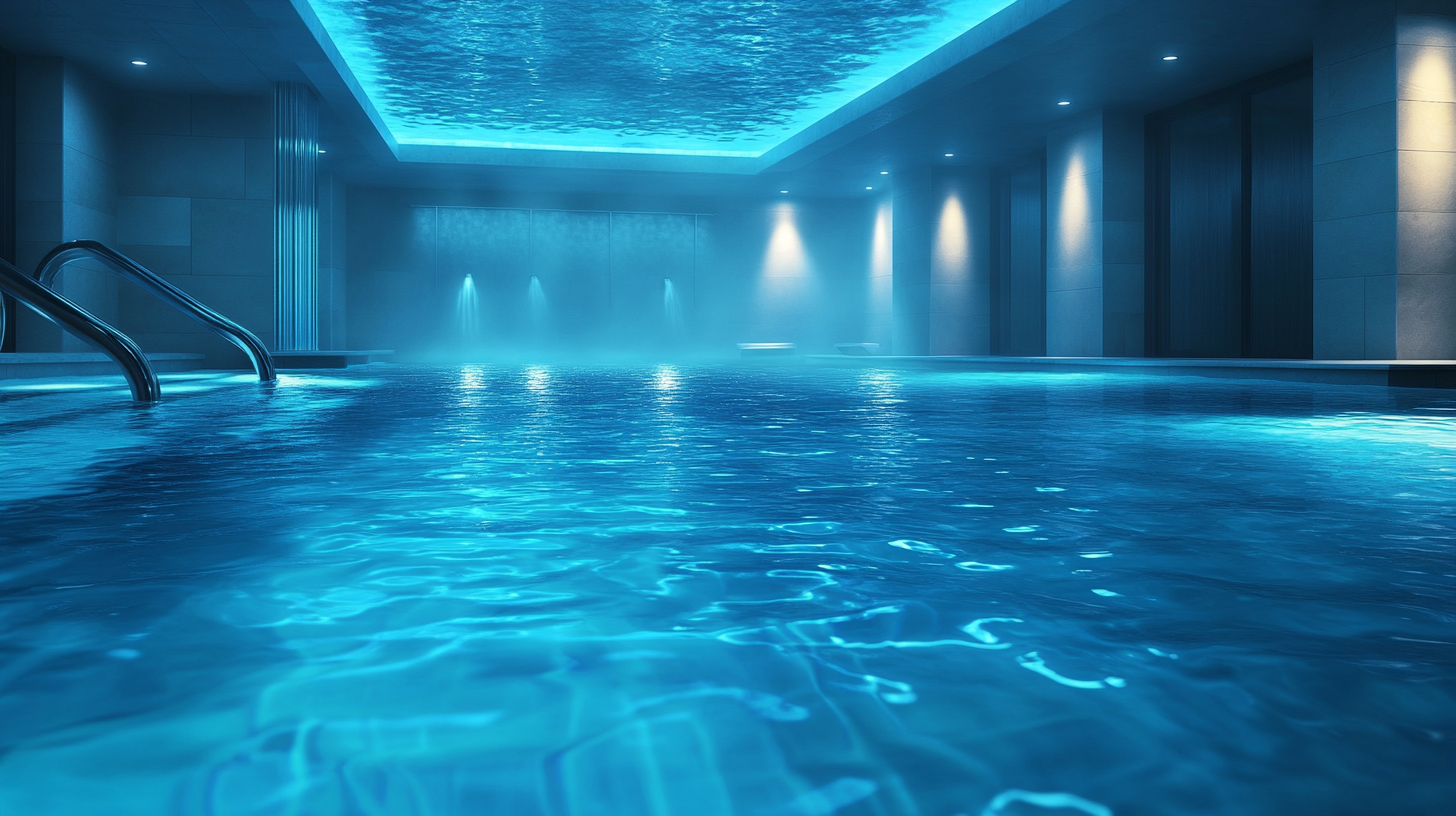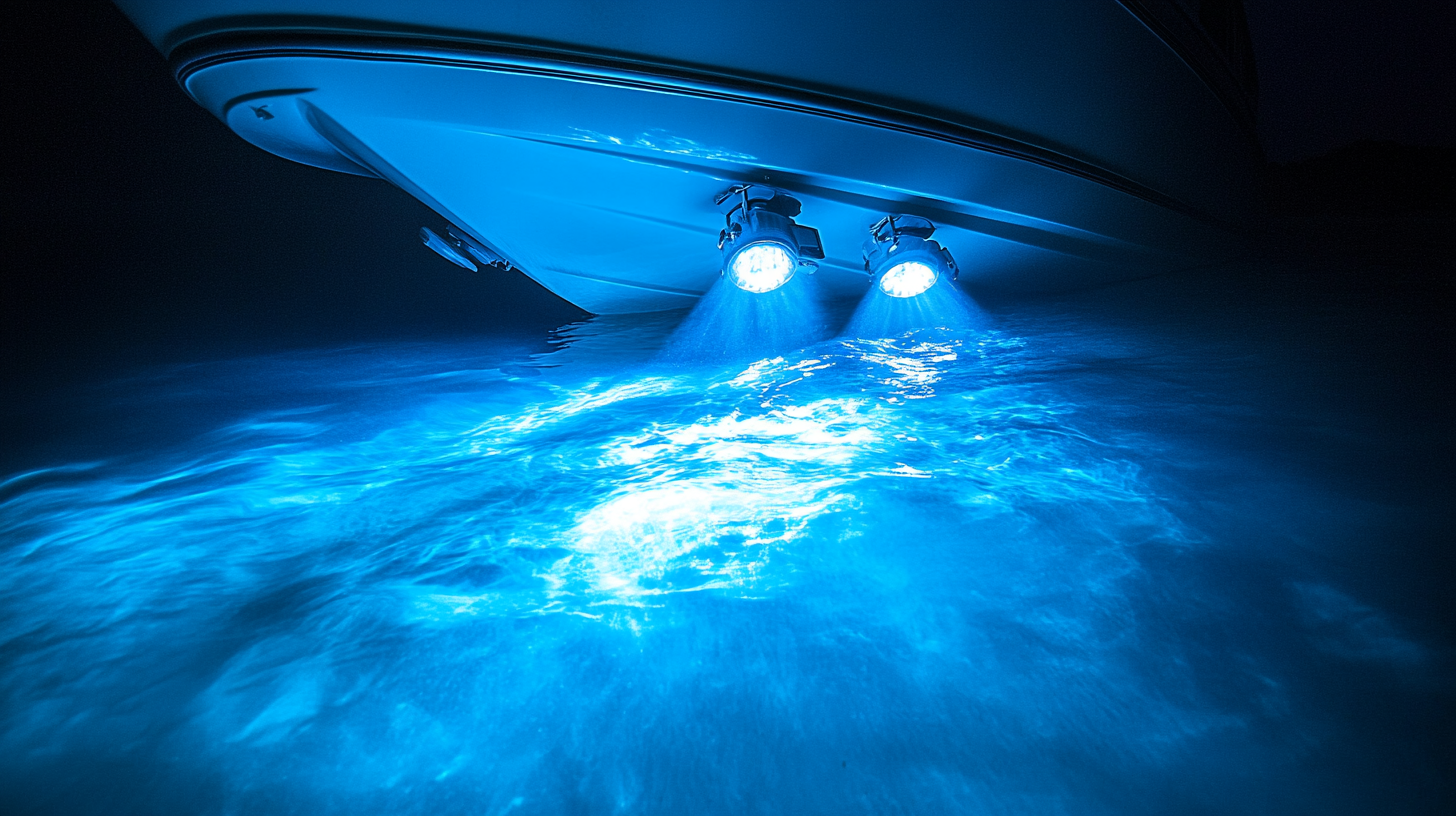Using underwater pool lights for therapeutic purposes
Light therapy has been a well-regarded method for treating various health conditions for decades. The science behind it involves the use of specific wavelengths of light to penetrate the skin and evoke biological responses. When it comes to the use of underwater pool lights for therapeutic purposes, the interaction between light and water further enhances these effects. Water acts as a natural magnifier and filter, amplifying the light’s intensity while providing a soothing environment for the user. This creates a unique combination of visual stimulation and physical relaxation that cannot be easily achieved on land.
Different colors of light have distinct impacts on the body and mind. For instance, blue light is known for its calming effects and is often used to treat conditions like Seasonal Affective Disorder (SAD). Red light, on the other hand, is utilized for its ability to promote circulation and aid in muscle recovery. Underwater pool lights can be designed to deliver these specific wavelengths, making your pool not just a place for swimming, but also a therapeutic sanctuary. This innovative application allows for a blend of color therapy and hydrotherapy, creating an immersive experience that benefits both mental and physical health.
Moreover, the refractive properties of water can enhance the dispersion of light, providing an even, encompassing glow that envelops the swimmer. This creates an immersive experience where light and water work in tandem to promote wellbeing. The science behind this synergy is rooted in our biological responses to these stimuli, making underwater pool lights a fascinating tool for therapeutic purposes. Whether you are looking to alleviate stress, boost mood, or aid in physical recovery, incorporating light-emitting devices in your pool routine offers a myriad of benefits supported by scientific research.
Benefits of underwater lights for mental health
Incorporating underwater pool lights for therapeutic purposes can provide significant mental health benefits that are both profound and long-lasting. One of the primary advantages is the ability of these lights to create a serene and tranquil environment. As the body floats, the gentle waves combined with the soft, calming colors of the pool lights produce a meditative state. This immersive experience can lead to reduced stress levels, helping individuals to unwind and release the tension accumulated from daily life. When submerged in water, the combined sensory input of gentle buoyancy and visual serenity can promote an overall sense of well-being.
Specifically, blue and green lights are particularly effective in soothing anxiety and promoting relaxation. Blue light has been shown to lower blood pressure and heart rate, making it an excellent choice for people struggling with anxiety or high stress. Many studies have also indicated that exposure to blue light can help improve sleep quality, a factor directly linked to better mental health. On the other hand, green light is often associated with nature and can instill a sense of calm and tranquility. The natural association individuals have with outdoor environments, coupled with the subtle play of light underwater, can evoke feelings of peace and connectedness.
Additionally, the dynamic movement and shimmering effects created by underwater pool lights can serve as a form of visual therapy. The way light diffuses through water can have a mesmerizing, hypnotic quality that evokes deep states of relaxation and mindfulness. This can be particularly beneficial for individuals who practice meditation or mindfulness techniques, as the visual stimuli provided by the underwater lights can enhance focus and facilitate a deeper meditative state. This visual stimulus, paired with the physical comfort provided by the water, creates an immersive environment conducive to mental clarity and emotional balance.
Moreover, underwater pool lights can be incredibly effective in combating the symptoms of Seasonal Affective Disorder (SAD). During the winter months, when natural sunlight is scarce, the vibrant hues of these lights can simulate the brightness and warmth of the sun, helping to alleviate depression and improve mood. For individuals suffering from SAD, regular exposure to light therapy through underwater pool lights can counteract the lack of natural light and serve as a vital tool in managing their condition. The therapeutic benefits of underwater lights extend far beyond aesthetic appeal, offering a valuable resource in enhancing mental health and emotional well-being.
Enhancing physical therapy with light
Integrating underwater pool lights into physical therapy routines can be a game-changer for anyone seeking to rehabilitate from an injury or improve their overall physical conditioning. The interaction of light with water not only creates a visually appealing environment but also provides numerous benefits that make physical therapy sessions more efficient and enjoyable. By harnessing the power of these therapeutic tools, you can enhance the overall effectiveness of physical therapy, making the rehabilitation process quicker and more enjoyable.
One of the most significant advantages of using underwater pool lights during physical therapy is the enhancement of motor skills and coordination. The dynamic lighting effects created by these lights can make exercises more engaging, encouraging patients to perform their movements more accurately. For instance, moving through water illuminated with different colors helps individuals focus on specific movement patterns, providing visual cues that aid in correct alignment and technique. This can be particularly beneficial for patients recovering from neurological conditions or those undergoing physical rehabilitation after surgery.
Furthermore, the buoyancy of water naturally reduces the stress on joints and muscles, which is an essential aspect of aquatic therapy. When coupled with the relaxing and stimulating effects of underwater pool lights, the combination provides an environment conducive to more effective exercise with lower risk of injury. As the body is partially supported by the water, individuals can perform a wider range of motion exercises without the pain and discomfort often experienced on dry land. This makes it easier for people with arthritis, back pain, or other musculoskeletal issues to engage in physical activity, significantly improving their range of motion and flexibility.
Another key benefit is the ability of underwater pool lights to aid in muscle recovery. When lights emit specific wavelengths, such as red or infrared, they can penetrate deep into the skin and tissues, promoting blood circulation and reducing inflammation. This is particularly useful for athletes or individuals undergoing intensive physical training. After a strenuous workout, immersing in a pool with strategically placed red or infrared lights can facilitate quicker muscle recovery, decrease muscle soreness, and expedite the healing process. The anti-inflammatory properties of certain light wavelengths also help in reducing swelling, making recovery from injuries more manageable and less painful.
Additionally, the calming effects of ambient lighting can make physical therapy sessions less intimidating and more approachable, especially for individuals who may feel anxious about their rehabilitation process. The soothing colors and gentle movement of water illuminated by the lights create a tranquil atmosphere, helping to alleviate any psychological barriers to therapy. This can lead to higher levels of patient compliance and better overall outcomes, as individuals are more likely to attend sessions regularly and engage fully in their prescribed exercises.
Underwater pool lights are not just practical tools; they also add an element of fun and novelty to physical therapy sessions. The engaging environment created by the lights can make routine exercises feel less monotonous, injecting a sense of playfulness and enjoyment into the rehabilitation process. This can be particularly beneficial for children or individuals with cognitive impairments, as the stimulating and visually appealing environment can hold their attention better than traditional therapy settings.
Underwater pool lights offer a multifaceted approach to enhancing physical therapy. From promoting better motor skills and reducing joint stress to aiding in muscle recovery and creating an inviting atmosphere, these lights serve various therapeutic purposes that can significantly improve the rehabilitation experience. By integrating underwater pool lights into physical therapy routines, one can create a holistic, engaging, and effective path to physical well-being.
Choosing the right underwater pool lights
Selecting the appropriate underwater pool lights for therapeutic purposes involves evaluating several factors to ensure maximum efficacy and safety. One critical consideration is the spectrum and intensity of the light. Different wavelengths of light offer various therapeutic benefits. For instance, blue and green lights are excellent for mental relaxation, while red and infrared lights can aid in muscle recovery and circulation. It is essential to choose lights that can either change colors or produce the specific wavelengths needed for your therapeutic goals.
Brightness and adjustability are equally important. Too much light can be overwhelming and counterproductive to relaxation, while insufficient light may not provide the desired therapeutic effects. Therefore, opting for underwater pool lights with dimming capabilities allows you to customize the lighting to suit the therapeutic needs at any given time. Some advanced systems even permit remote control adjustments, making it easier to switch settings without leaving the water.
Another crucial factor is the light distribution pattern. Underwater pool lights should offer even and broad dispersion to create an immersive environment. A well-dispersed light will not only enhance the aesthetics of the pool but also ensure a uniform therapeutic experience by covering the entire water surface. Lights with wide-angle lenses or multiple light sources can achieve better distribution, effectively enveloping the swimmer in therapeutic illumination.
Durability and waterproofing are paramount when choosing underwater pool lights. Since these lights will be submerged and exposed to chemicals like chlorine, they need to be robust and corrosion-resistant. Look for products that comply with IP68 waterproofing standards, ensuring they can withstand prolonged immersion. Additionally, it’s wise to consider materials like stainless steel or marine-grade aluminum that offer greater resistance to corrosion and wear.
Energy efficiency is also a consideration, especially if you plan on using the lights frequently. LED lights are generally the best option as they consume less power and have a longer life span compared to traditional incandescent or halogen bulbs. Energy-efficient lights not only reduce electricity costs but also lessen the environmental impact, aligning with sustainable practices.
The user interface and installation process should not be overlooked. Underwater pool lights with a user-friendly control system make it easier to select the appropriate settings and ensure a hassle-free operation. Compatibility with existing pool systems and ease of installation are critical; opting for lights that can be easily retrofitted into your existing setup can save both time and money. Some systems offer wireless controls or even smartphone app integration, providing added convenience and flexibility.
Finally, it’s essential to consider any safety features that come with the underwater pool lights. Overheating protection, low voltage operation, and robust insulation are essential features that contribute to the safe use of these lights in a therapeutic context. Installing lights that comply with local safety regulations and guidelines ensures that the therapeutic environment is not compromised by electrical hazards or malfunctions.
When it comes to therapeutic purposes, underwater pool lights can significantly enhance both mental and physical well-being. By carefully selecting the right lights tailored to your specific needs, you can create a highly effective and safe therapeutic environment that maximizes the benefits of light therapy and hydrotherapy. Whether aiming for mental relaxation, muscle recovery, or overall wellness, the right underwater pool lights can transform your pool into a holistic sanctuary for healing and rejuvenation.
Safety considerations for therapeutic use
When using underwater pool lights for therapeutic purposes, adhering to safety guidelines is crucial to ensure a secure and beneficial experience. One of the first considerations is the electrical safety of the lighting system. Underwater pool lights should operate at low voltage to minimize the risk of electrical shock. Most modern underwater LED lights are designed to be both energy-efficient and safe for prolonged submersion, making them suitable for therapeutic settings. Ensuring that the lighting system is installed by a certified professional can further reduce risks associated with electrical wiring and water exposure.
Another factor to consider is the proper placement of underwater pool lights. Lights should be strategically positioned to provide even illumination without causing glare that might strain the eyes. Ideally, the lights should be installed in such a way that they enhance the visual appeal and therapeutic ambiance of the pool, while also ensuring that swimmers can clearly see their surroundings. This helps to prevent accidents like slips, trips, and falls, especially important when the pool is used for therapeutic exercises and relaxation sessions.
Pool water quality is another critical consideration when incorporating therapeutic lighting. Proper maintenance of water, including regular cleaning and chemical balancing, is essential to ensure that the water does not become a breeding ground for bacteria and algae, which can be harmful to users. Clean water enhances the effectiveness of light therapy, ensuring that the light’s benefits are not diminished by cloudy or contaminated conditions. Routine inspection and maintenance schedules for both the pool and the lighting system can help sustain an optimal therapeutic environment.
For those using the pool for extended therapeutic sessions, it is vital to be mindful of the duration and intensity of light exposure. While light therapy can offer numerous benefits, overexposure can lead to adverse effects such as eye strain, skin irritation, or even thermal burns in rare cases. To safeguard against these potential issues, it is advisable to start with shorter exposure times and gradually increase the duration as the body adjusts, always monitoring for any signs of discomfort or adverse reactions.
Accessibility must also be taken into account when designing a therapeutic pool setting. For individuals with mobility challenges, ensuring safe entry and exit points, as well as providing supportive equipment like handrails and gentle slopes, can make a significant difference. Adequate lighting around these areas increases visibility, reducing the risk of accidents and making the pool more user-friendly for people of all abilities.
Inspection and routine maintenance play a pivotal role in the safe operation of underwater pool lights. Regular checks should be conducted to ensure that lights are functioning correctly and that there are no signs of water ingress or electrical faults. Hiring a professional for annual inspections ensures that any potential issues are identified and addressed promptly, maintaining a safe and effective therapeutic environment year-round.
When considering the use of chemicals to treat pool water, it’s important to select types that are compatible with the lighting system. Some chemicals can have corrosive effects on light fixtures, compromising their integrity and safety. Opting for non-corrosive, pool-safe chemicals can prolong the lifespan of your underwater lights and enhance the overall safety of the pool environment.
Finally, it is essential to educate all users on the safe practices associated with the therapeutic use of underwater pool lights. Providing guidelines and instructions on the proper use and potential hazards can empower users to enjoy the benefits of light therapy while minimizing risks. Clear signage, instructions, and even brief orientation sessions can enhance user confidence and safety, making the pool a safe haven for relaxation and healing.
Incorporating underwater pool lights for therapeutic purposes demands a careful approach to safety that includes choosing the right lighting system, maintaining water quality, and providing accessible and informed experiences. By addressing these safety considerations, you can create a secure and effective therapeutic environment that maximizes the benefits of light therapy in a serene and healing aquatic setting.


